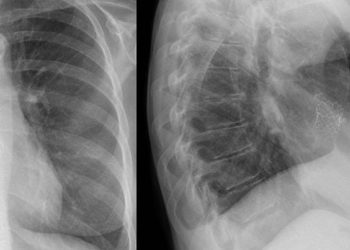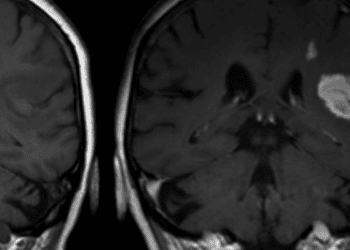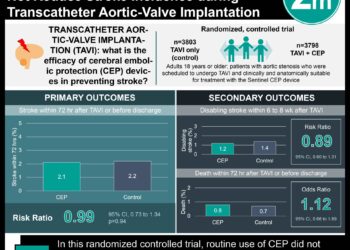Atherosclerotic risk factors associated with stroke in adulthood present from childhood and increase with age
1. Atherosclerotic risk factors associated with stroke later in life were present in children, but not associated with arterial ischemic stroke.
2. Atherosclerotic risk factors become increasingly common with age and are significantly associated with risk of stroke by the third decade of life.
Level of Evidence Rating: 2 (Good)
Study Rundown: Arterial ischemic stroke can be a devastating health event, the incidence of which is increasing amongst young individuals aged 50 and below. Atherosclerosis – a metabolic and vascular process which begins early in life – is known to heavily predispose individuals to stroke in older adulthood. The present study sought to assess the relationship between risk factors for atherosclerosis (hypertension, hyperlipidemia, obesity, smoking, diabetes) and risk of stroke at variable times in life.
141 cases of arterial ischemic stroke were identified amongst children and 455 amongst young adults aged 18-50 in the study population. The prevalence of atherosclerotic risk factors (ARFs) was consistently low amongst both pediatric cases and controls and increased consistently with age. Of note, hypertension and diabetes were present in 2.8% of pediatric cases and none of the pediatric controls. The odds of stroke were increased with the presence of multiple risk factors, particularly later in life. More than half of the cases aged 40-49 had multiple ARFs. In this age group, atherosclerosis was the leading cause of stroke while idiopathic stroke was the most likely etiology in all other age groups evaluated.
This study by Poisson et al demonstrated that the risk of stroke secondary to presumed atherosclerosis increases with age and with the number of ARFs, although this risk is not significant until approximately middle age. A major drawback of this study is the reliance on a diagnosis of presumed atherosclerosis based on the number of risk factors that were identified retrospectively. This methodology relies on several assumptions and may introduce misclassification bias. However, the large sample size strengthens this study, as does the scientific plausibility of these findings. Further work in this area is needed to identify the optimal time to begin screening for stroke risk and/or offer interventions to improve clinical outcomes.
Click here to read this study in JAMA Neurology
Relevant reading: Arterial ischemic stroke in children: risk factors and etiologies
In Depth [case-control study]: A nested case-control study was conducted in California using data from the Kaiser Permanente Northern California database collected between 2000 and 2014. Cases were identified using keyword searches and text string searches for International Classification of Disease codes as well as radiological reports relevant to cerebral infarct. Potential cases were then individually reviewed for inclusion by a study team clinician. Both clinical and radiographic evidence were required to include pediatric cases.
The odds ratios for having ARFs amongst participants by age were as follows: 1.87 (95% confidence interval 0.72-4.88) for ages 0-9; 1.00 (0.51-1.99) for age 10-19; 2.3 (1.17-4.51) for age 20-29; 3.57 (2.34-5.45) for age 30-39; and 4.91 (3.52-6.86) for age 40-49. The odds ratio of stroke with multiple ARFs increased notably with age: 5.29 (95% confidence interval 0.47-59.4) for age 0-9 years, 2.75 (0.77-9.87) for 10-19 years, 7.33 (1.92-27.9) for 20-29 years, 9.86 (4.96-19.6) for age 30-39 years and 9.35 (6.31-13.8) for age range 40-49 years. The prevalence of presumed atherosclerosis by age group was as follows: 0% (0-9 years), 1.8% (10-19 years), 8.5% (20-29 years), 21.5% (30-39 years) and 42.5% (40-49 years).
Image: PD
©2022 2 Minute Medicine, Inc. All rights reserved. No works may be reproduced without expressed written consent from 2 Minute Medicine, Inc. Inquire about licensing here. No article should be construed as medical advice and is not intended as such by the authors or by 2 Minute Medicine, Inc.







